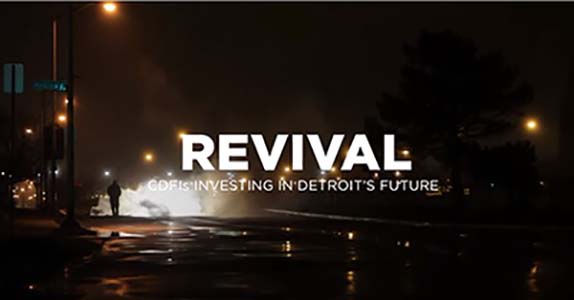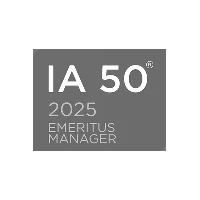By Bradford Frost, Director, Detroit Program
2015 was a year of optimism for post-bankruptcy Detroit.
We saw significant investments pour in, including the first projects due to the $100 million pledge from JP Morgan Chase. Combined with the $30 million Woodward Corridor Investment Fund, new and rehabbed buildings are getting developed at a fast clip. Thousands of new streetlights are on. Blight is being tackled at a faster pace than ever before. Detroit’s comeback story is replacing the apocalyptic headlines of recent memory.
However, as a longtime Detroit resident and community development professional, I believe our city is at a significant crossroads.
Take Midtown, the bellwether of Detroit’s momentum-rising story. Since 2000, Midtown has been able to attract over $1 billion in new investment, and it has secured well over 50 new businesses since 2010. It achieves 97-99 percent occupancy rates of its redeveloped housing stock annually. With that resurgence, the area has also seen some predictable – and strategically intended – increases in its higher-income and upwardly mobile populations.
The fundamental question remains: Will redevelopment in Detroit lead to equitable growth? Will Midtown’s lower-income and working-class residents who have lived there for decades continue to be a significant part of Detroit’s rich culture, history, and vibrancy?
Ensuring growth across the income spectrum
Full-blown gentrification (i.e. the rise of higher-income households that effectively displace low-income households from a particular neighborhood) may seem far off given the economic fundamentals in Detroit – Midtown, for example, still has a poverty rate of over 40 percent, and over 60 percent of its households earn less than $25,000 per year. Nonetheless, the gentrification debate is gripping our city and threatens its progress. While I’m the first to acknowledge that current redevelopment efforts, while exciting and necessary to grow Detroit once again, aren’t inclusive enough, I think this debate is premature at best, and harmful to our city’s future prosperity.
I argue instead that in Midtown and across Detroit, we need to focus on inclusive growth.
Inclusive growth in Detroit’s development priorities must start with strategic investments into higher-density centers that connect residents to genuine pathways to economic mobility. Such efforts require specific equity and inclusion metrics, and demand that Detroit become a city where newcomers and current residents alike – across the entire income spectrum – possess equal access to good homes, safe and vibrant districts, good jobs and quality educational supports.
On the surface, these prescriptions may seem obvious. Yet realizing that vision will be complicated and fraught, as few policies in Detroit address growth strategies that also focus on equity and inclusion in specific ways. They are further complicated by the unique characteristics, strengths and trajectories of Detroit’s diverse neighborhoods.
Strategies for inclusive growth
As part of Capital Impact Partners’ work in Detroit, which I direct, my colleague Elizabeth Luther and I have explored what an “inclusive growth” strategy might look like for the city as it promotes development and wrestles with its inclusion imperative for all residents.
In our report, Towards Inclusive Growth in Detroit: Density & Income Mix Strategies for Detroit’s Mixed-Use Corridors, we’ve laid out a framework that addresses scenarios for cultivating mixed-income neighborhoods where a diverse set of residents can live, work and grow together.
Among the keys steps, we believe the city must:
- Collect more market data, including a review of the available and required real estate capital sources;
- Craft scenarios that maximize land use and development policies the city of Detroit will support and enforce;
- Secure commitment from community development financial institutions (CDFI) and philanthropic partners to develop patient, long-term financing tools that will support mixed-use and single-family housing, while preserving affordable housing.
The report also maps out a path that groups can follow to successfully invest in ways that drive inclusive growth. This includes:
- Driving investments to achieve strategic density targets in Detroit’s mixed-use corridor areas;
- Collaborating with other CDFIs and the city of Detroit to make sure money is being invested strategically;
- Using the regional income mix as a general guide for developing neighborhoods;
- Ensuring there’s enough high-quality housing for low-income households so that current residents aren’t forced out of their neighborhoods;
- Collaborating with workforce initiatives to help individuals and households rise from poverty;
- Developing policies and development practices explicitly aimed at reducing concentrated poverty in Detroit.
We plan to conduct more research into the best ways to support healthy, mixed-income neighborhoods and we welcome – even require – input and cooperation among residents, community-based organizations, philanthropists and governments at the local, state and federal level.
Moving toward inclusive growth
Fortunately, other examples exist of how to properly invest in projects that create inclusive growth. At Capital Impact Partners, a national CDFI, we have developed our mission-driven lending approach over the course of nearly a decade of investing in Detroit. Through these lending efforts, we’ve deployed over $100 million in financing for projects to increase access to critical services across the city for things like education, healthy food, health care, housing, and dignified aging options.
As a result, Capital Impact is responsible for over 10 percent of the redeveloped or new housing stock in the greater downtown area since 2010. We’ve taken care to ensure that this housing is accessible to the low-income and working-class residents of the city.
2015 was an especially exciting year for Capital Impact Partners and our work in Detroit. Regis Houze, our first project through the Woodward Corridor Investment Fund, brought 58 workforce housing units and several retail spaces to New Center, providing transit-friendly housing to hospital staff, government employees, and students in a neighborhood where occupancy rates usually hover at 98%.
We financed the purchase and renovation of the H.R. Apartments in Detroit’s Midtown district. The building had been vacant for seven years, and will be rehabilitated and renovated into 28 new workforce housing units and two small retail spaces.
We celebrated the opening of Rainier Court, a rehabilitated apartment building in Midtown that brought 36 workforce-housing units back into the neighborhood.
This work by Capital Impact and other CDFIs has delivered investments into Detroit when many others were unwilling to take that risk. This financing has bridged the gap for the financial, philanthropic, and governmental sectors to unlock investment potential in the city’s greater downtown and beyond.
Success won’t happen overnight. The process will require long-term commitments from the city to set policies and provide services that retain current residents and ensure Detroit is an attractive place to invest. While ongoing commitments from philanthropy and businesses will provide seed money and create jobs, there’s also a deeper need for teamwork and unity to guarantee that Detroit’s mixed-income development creates benefits for current and future residents of the city. We hope Detroit may ultimately prove to be a model city for inclusive and equitable economic development, but as we grow we must ensure that our approach to inclusive growth strategies is actionable and measurable instead of mere sloganeering. The prescriptions might be the same in other cities, but the results matter most.
Versions of this article appeared in The Detroit News and Next Billion.








